Britain in the 1950s was leading the world in the development of jet aircraft travel, and had unveiled the world’s first commercial jet airliner – the de Havilland Comet.
With initial success, this world beater was on fire and had arrive ahead of rival manufacturers in the United States. However, following a few fatal crashes that underlined safety issues with the aircraft, the Comet was grounded awaiting new variants that would address these problems.
In the meantime, Boeing and Douglas stormed ahead with their 707 and DC-8 airliners.
While the Comet 4 would still emerge and beat the 707 into non-stop transatlantic travel between London and New York, the 707 (and DC-8) would go on to be huge commercial successes and sell many more examples than the British jet.
Despite initial blocks from the government, the Boeing 707 did eventually make a mark on Britain, flying for a number of airlines, which we cover here:
BOAC
Because of a policy of buying British, the UK government was initially reluctant for the national carriers (BOAC and BEA) to buy the American jets over the Comet. But eventually they relented as long as British Rolls-Royce engines were used to power the 707 aircraft.
Therefore BOAC took delivery of 707-436s from May 1960, with -300s following later.
For a period, BOAC formed BOAC-Cunard with Cunard Eagle Airways, with each airline assigning Boeing 707 aircraft to the operation. The airline lasted from 1962-66.
BEA
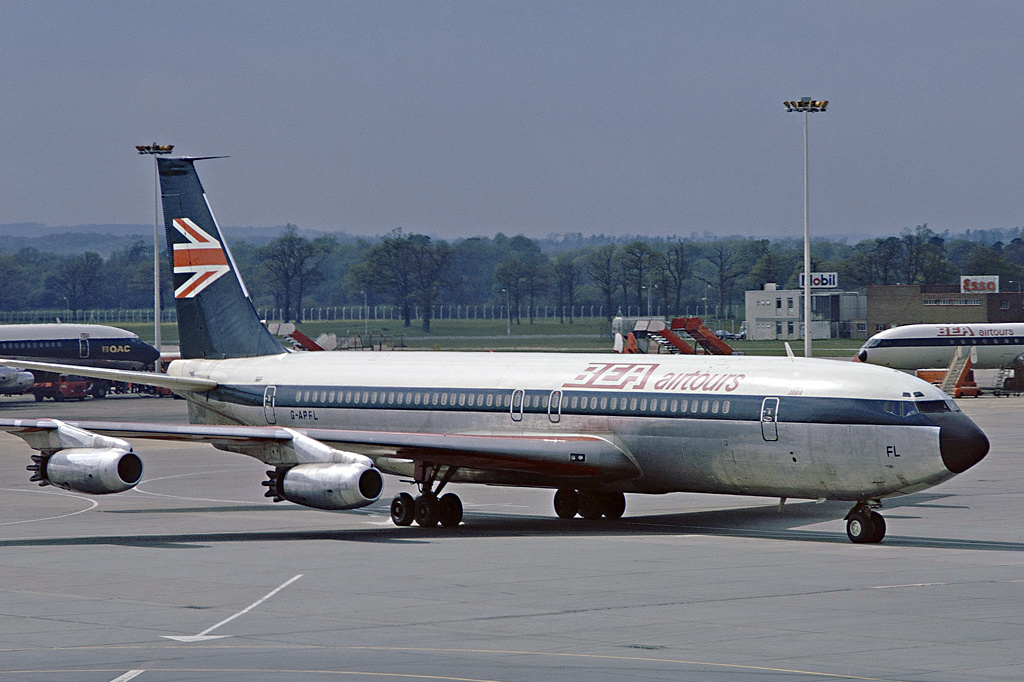
Steve Fitzgerald (GFDL 1.2 <http://www.gnu.org/licenses/old-licenses/fdl-1.2.html> or GFDL 1.2 <http://www.gnu.org/licenses/old-licenses/fdl-1.2.html>), via Wikimedia Commons
You might consider the 707 to be a long-range airline, and so less relevant to domestic and regional airlines like British European Airways (BEA).
However, BEA acquired a some ex-American Airlines 707-123Bs from 1970 to allow long-haul affinity charters with its BEA Airtours arm.
These were followed later by some 707-436 transferred from BOAC the next year.
British Airways
BOAC’s Boeing 707s would go on to fly with British Airways following the merger with BEA in 1974, creating this new national airline.
In all, 12 707-300s and ten 707-400s were operated by British Airways on routes out of London Heathrow. But more advanced types were arriving, and by 1984 they had all been retired.
British Airtours
Following the creation of British Airways out of BOAC and BEA in 1974, BEA Airtours was given the new name British Airtours.
This leisure airline continued to use the fleet of Boeing 707s that had been acquired in the 1970s, flying them on European and some long-haul routes.
They were retired in 1984.
British Caledonian / Caledonian Airways

Steve Fitzgerald (GFDL 1.2 <http://www.gnu.org/licenses/old-licenses/fdl-1.2.html> or GFDL 1.2 <http://www.gnu.org/licenses/old-licenses/fdl-1.2.html>), via Wikimedia Commons
Caledonian Airways was formed in 1961 as a charter carrier. It acquired its first Boeing 707-300 in 1967, and the fleet grew to 5 examples by 1970.
That year, Caledonian merged with British United Airways (BUA) to become Caledonian / BUA, and then later British Caledonian (BCal).
In the 1970s it used its 707s to operate affinity group charters across the Atlantic and to the Far East.
As the airline developed its scheduled routes, these were also used to fly to South America and West Africa, and later North America.
More second-hand 707s were acquired, and some were converted into freighters. They were eventually replaced in the early 1980s
British Eagle

British Eagle was a hard working independent airline founded in 1948.
After operating a series of piston and turboprop airliners, it moved into the jet era in 1965 with BAC One-Elevens and two Boeing 707-300Cs.
It should be noted, however, that British Eagle had earlier started a relationship with the Cunard shipping company to create Cunard Eagle Airways, which eventually acquired Boeing 707s for transatlantic routes.
This would be a short-lived relationship, with Cunard entering a similar agreement with BOAC (see earlier) in 1963.
British Midland

Michel Gilliand (GFDL 1.2 <http://www.gnu.org/licenses/old-licenses/fdl-1.2.html> or GFDL 1.2 <http://www.gnu.org/licenses/old-licenses/fdl-1.2.html>), via Wikimedia Commons
Well-known as one of Britain’s major domestic and regional carriers, British Midland actually operated a total of 13 Boeing 707-300/300C aircraft between 1970-1986.
While some of these wore the airline’s livery and operated its flights, the airline was quick to realise the lucrative opportunity to offer their 707s out to other airlines on wet-lease agreements, whereby British Midland crews fly the aircraft on behalf of other carriers.
This lasted for many years, and the fleet wore a variety of hybrid liveries.
Britannia Airways
Britannia Airways was a well-known British leisure operator which is today part of the TUI group, and flying as TUI Airways.
Its fleet is best known as comprising Boeing 737, 757 and 767 types.
However, for a while it flew a small fleet of Boeing 707s leased from other carriers. These were used on affinity charters, freight charters, and to boost summer holiday schedules. They were gone by 1973, however.
Dan-Air London
This airline was known for its eclectic mix of aircraft types.
It rarely flew anything new until the later years of its life, and in the early 1970s a pair of Boeing 707s was acquired second-hand for use on the affinity group charter market.
For a while Dan Air was also contracted to fly 707s for IAS Cargo Airlines on behalf of Zambia Airways on a weekly flight. In 1977 one of these aircraft crashed near Lusaka.
Donaldson International
Donaldson was a charter airline formed in 1968 with Bristol Britannia aircraft.
In 1971 it leased two Boeing 707-300C aircraft for use on transatlantic charters, as well as on charter freight work.
The airline ceased flying in August 1974 and the 707s were returned to Pan Am.
Invicta Cargo Airways
Invicta briefly operated the Boeing 720B, a shortened version of the 707, from 1971-76 on freight charter work.
Laker Airways

RuthAS, CC BY 3.0 <https://creativecommons.org/licenses/by/3.0>, via Wikimedia Commons
Founded by Freddie Laker in 1966, his namesake airline was a charter carrier based at Gatwick Airport.
As a pioneer in low-cost air travel, Laker formed plans to operate his London-New York Skytrain in 1969, and acquired two former British Eagle Boeing 707-123Bs.
While awaiting approval, these aircraft were used on European holiday routes, and also contracted out to other carriers.
Once Skytrain got underway, Laker acquired two 707-351Bs to start a Los Angeles link.
Laker Airways sadly went bankrupt in the early 1980s.
Lloyd International
Lloyd International was a British charter airline which operated between 1961-1972.
Like many other carriers at the time, it acquired Boeing 707-300Bs in 1970 to join the affinity group charter market.
Of its 5 aircraft, some could be used in convertible cargo mode to allow freighter charters.
Monarch Airlines

Mike Freer – Touchdown-aviation (GFDL 1.2 <http://www.gnu.org/licenses/old-licenses/fdl-1.2.html> or GFDL 1.2 <http://www.gnu.org/licenses/old-licenses/fdl-1.2.html>), via Wikimedia Commons
Monarch was a British charter airline with a long history.
During growing demand for its holiday charters, the airline acquired four Boeing 720B aircraft from 1971.
It later supplemented these with four 707-120B from 1978, and a single 707-320C in 1981. All were retired by 1983 as more modern types like the Boeing 757 joined the airline.
Scimitar Airways

Uli Elch, CC BY-SA 4.0 <https://creativecommons.org/licenses/by-sa/4.0>, via Wikimedia Commons
Scimitar was founded in 1978 with two Boeing 707-321C aircraft in convertible passenger and cargo configuration.
These were mostly chartered out to other airlines, and no passenger services were commenced. Flying ceased in 1980.
Tradewinds Airways
Founded in 1968 with CL-44 freighters, Tradewinds was a Gatwick-based cargo airline.
From 1977 Boeing 707-320C freighters were added, enabling the airline to start cargo charters to Chicago and Toronto.
They also operated to African destinations.
A total of nine 707s were operated by Tradewinds until its demise in 1990.
Honorary Mention – Royal Air Force
We don’t usually cover military operators, but as one of Britain’s largest operators of the Boeing 707 – albeit in its military variant – we thought we’d mention the Royal Air Force, who are still flying the type today.
These are specifically RC-135W “Rivet Joint” aircraft, flying in reconnaissance and signals intelligence roles as part of No 51 Squadron.
The aircraft are heavily modified, but still retain a semblance of the classic Boeing 707.

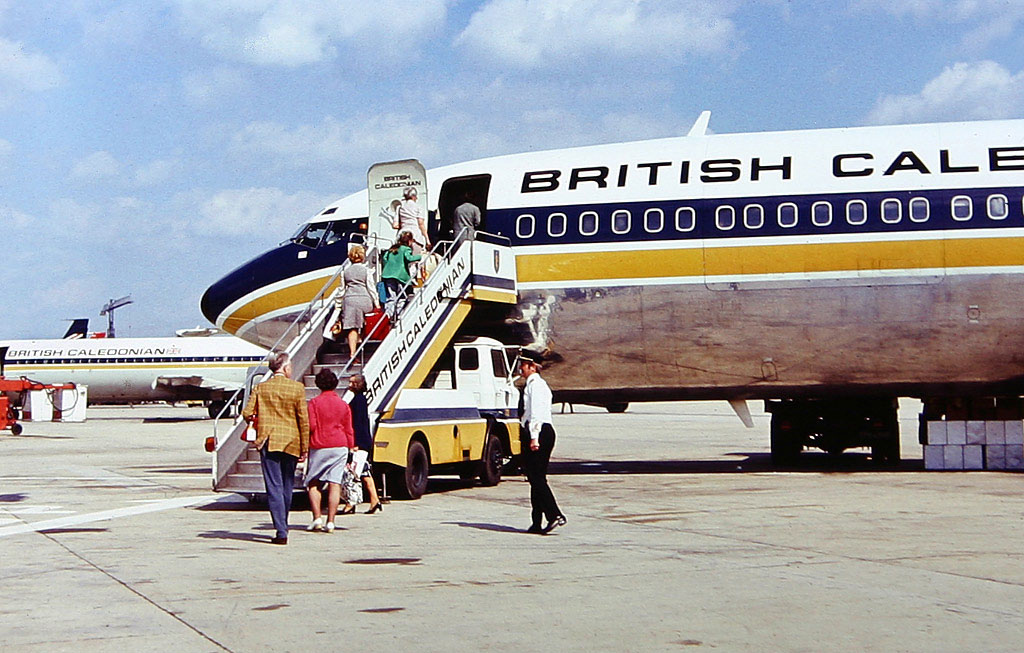





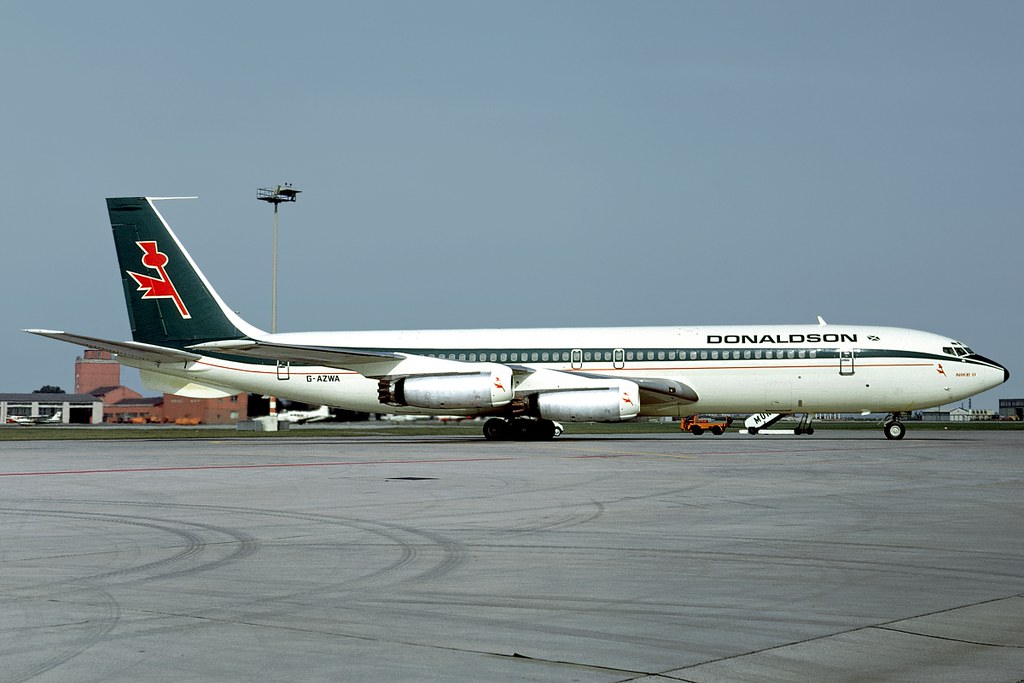
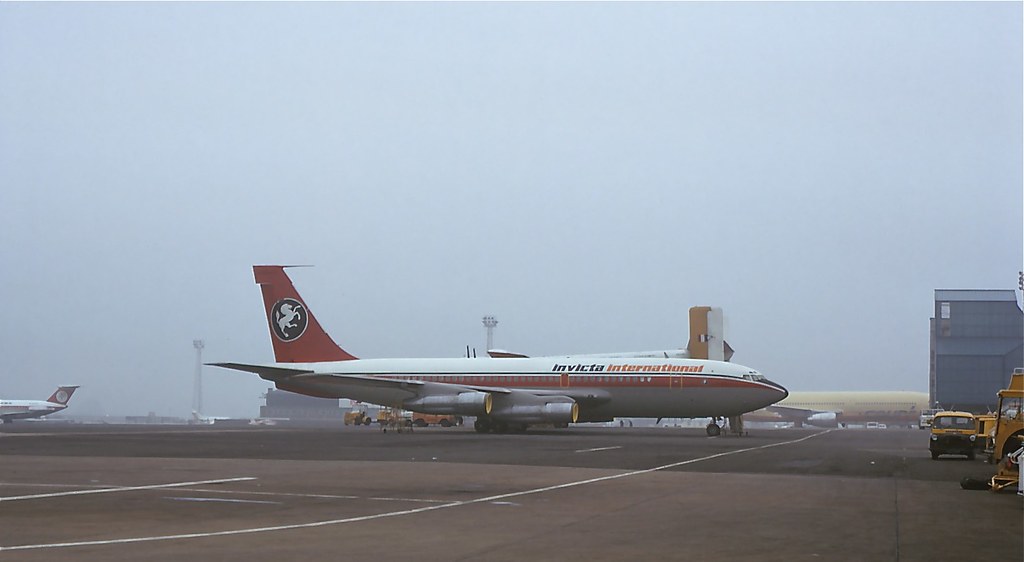
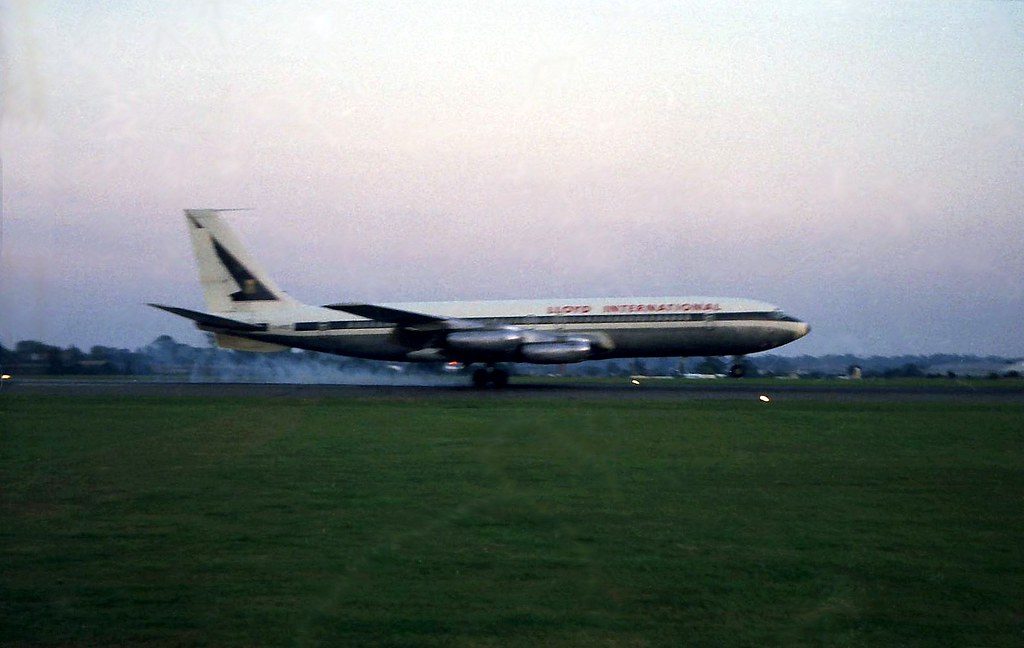




4 comments
Matt
You missed out Pelican Air Transport, the cargo airline operating at Gatwick in the 1980’s with a Boeing 707-321C G-BEVN ex N449PA c.n 19271) and Boeing 707-321C G-BPAT (ex N457PA c.n 19367), with their distinctive white fuselages and red pelican on the tails.
regards
Kevin
Hi Matt, BEA Airtours never operated the ex-American -123B’s. They wanted to obtain them but were prevented from doing so by the Government, who instructed them to take the ex-BOAC -436’s. Also the military C-135 is not a 707. Originally it had the Boeing designation 717. The aircraft has a narrower fuselage than the 707. Lloyd International 707s were not -320B’s, they had 2 -321s and one -324C.
Regards, John.
Hi Matt, only ever flew on a British registered B707, with BOAC, May 1970 LHR/SYD on G-APFC. Since then with other airlines, PANAM, AIR NIUGINI, AER LINGUS . Still a classic airliner to see, though not many left these days.
First 707 to land at Belfast was a British Eagle one, G-AWDG in around March 1968, on a training flight.
First scheduled 707 out of Belfast was 23/05/68 AER LINGUS EI-AMW BFS/SNN/NYC.
Thanks for all those great 707 shots.
Some BOAC pilots who flew the B707 at BOAC
After leaving the airline went on flying on
Secondment with PIA Pakistan international
On there B707s for a short while while other
Foreign pilots came on seen with PIA on the
B707 . BCAL Also leased there B707s including
British midland to PIA.